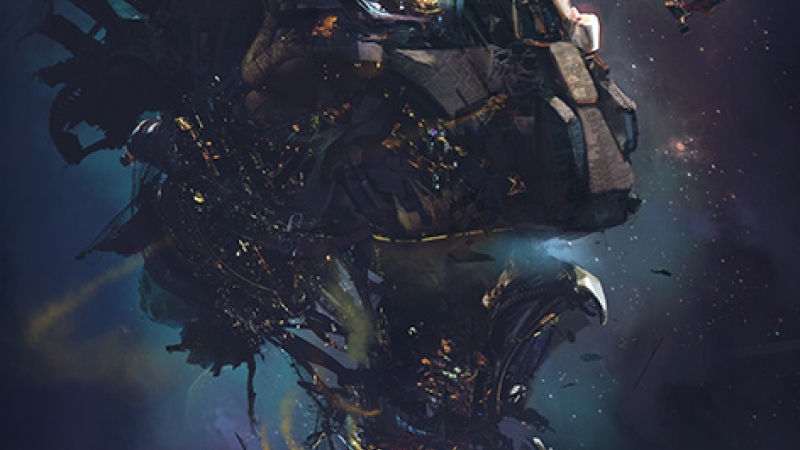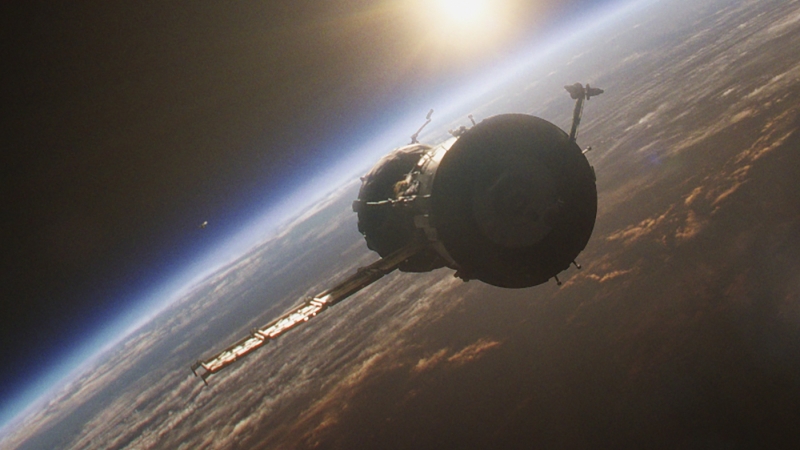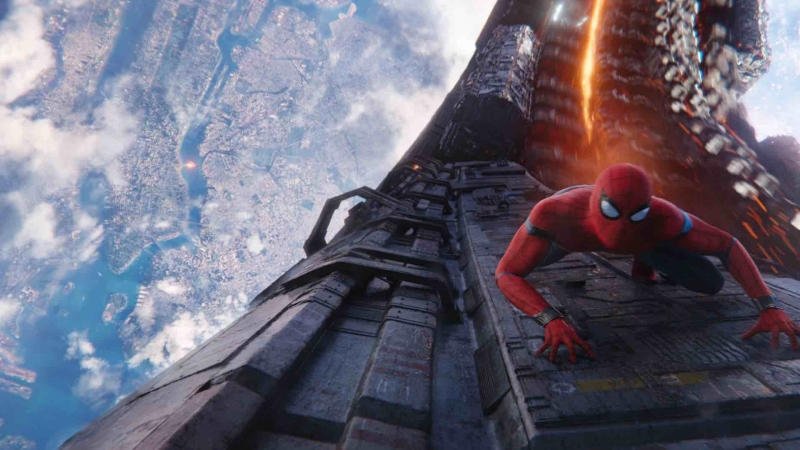
Jupiter Ascending
Warner Bros.
Andy and Lana Wachowski’s Jupiter Ascending brings an all-star cast (Mila Kunis, Channing Tatum, Eddie Redmayne) together in a lavish and beautifully designed sci-fi universe, run by an ancient dynasty that farms entire planets for their DNA.
Framestore's London and Montréal teams delivered over 500 shots for the film with the movie’s melting pot of aesthetic styles reflected in the wide range of visual effects crafted by the team. The scope of work was huge: from hero characters in the Sargorns and Keepers, to the environments of Balem’s boardroom and lab, armoury to the Titus Clipper dock, as well as digital doubles, spaceships, planets, and all manner of explosions, fireballs, shattering glass and liquid-like nano-technology.
'The film has an amazing, beautiful, unusual visual style, and it was enormously gratifying to work on something that paid so much attention to the world it was building.'
Chris Lawrence - VFX Supervisor

Creating the Keepers
Framestore was involved early on in the pre-production process, with a team of animators tasked with spending six months carrying out animation tests at Leavesden to help the directors plan the sequences and develop the alien characters.
First came the Keepers. Creepy by design, they are a group of slinking aliens able to cloak themselves from sight. 'The Keepers appear in a number of really nightmarish scenes, and work more as creatures of the night than traditional aliens, so we gave them these reversible knees and elbows which made them quite insect-like', explains Animation Supervisor Max Solomon.

Constructing the Sargorns
The Sargorns were a different prospect – powerful and capable of speech, these winged reptiles provided an animation challenge as they flicked between calm conversations with humans and moments of bestial rage. Their long, lizard skulls made dialogue interesting, especially as their teeth are fused to their lips. 'We had to find the right balance of flexibility within the constraints of that, so we made them talk out of the side of their mouths where there are fewer teeth', adds Solomon. Once they entered fight mode the emphasis fell on making them as animalistic as possible – moving on all fours and using their tails, or beating their huge leathery wings.

Fixing for a fight
An impressive fight takes place between Caine and one Sargorn, Greeghan, in Balem’s boardroom – a huge digital environment constructed by Framestore. Below the cavernous, gilded hall of the boardroom is another Framestore environment, a gruesome DNA laboratory revealed through the floor, which can be made transparent in an instant.
The fight that rages through these environments was a combination of practical and visual effects, transitioning seamlessly between real-life stunts and full CG shots. Ramps were built in the partial Balem’s Lab set, which allowed Channing Tatum to skate as if he was using jet boots. The team then removed the ramps, added Caine’s boots and animated the pursuing Greeghan. With the environment built in CG, Framestore's artists were able to replace camera moves when necessary, and create fully CG shots with a Caine digi-double for any shots that were impossible to film practically, such as when the pair crash through a pane of glass.


All aboard Titus' Clipper
As well as environments Framestore also created several of Jupiter Ascending’s spaceships. The most complex, Titus’ Clipper, is introduced with a majestic sweep through the icy rings of a planet. At three kilometres long, and consisting of around a billion polygons, it was Framestore’s biggest model to date, a much bigger construct that the International Space Station (ISS) in Gravity.
It is more lavishly detailed than the ISS too: 'a floating city, with a city’s worth of architecture', as Montréal VFX Supervisor Chris Lawrence puts it. 'Part of the challenge was giving the model enough richness to sell the scale while still looking functional – a challenge the modellers were very happy to solve'. The dock the Clipper arrives in is just as grand, a sprawling palatal environment with hundreds of individually placed lights and lots of reflective grand architectural detail. A small section of it was shot practically – a single floor for the actors to walk across, surrounded by green screen.

'The variety meant we could never slip into a rhythm, but it was also a lot of fun. It meant no two sequences were the same, which is also what’s so surprising and appealing about this film.'
Max Solomon - Animation Supervisor
Services

Art Department
Creating the key first looks for a film's characters, environments and features.

Previsualisation
We help directors previsualise their films in CG in order to help them make creative decisions.

Animation
Eye-catching animation work that continues to push the boundaries of digital storytelling.

VFX
Known for our prowess in the VFX industry, Framestore's work ranges from key animated characters to complex environments and effects.




